Are you learning a new piano piece, and trying to get it up to tempo? It can be difficult to play a song at a fast speed, especially when you're a beginning or intermediate pianist. Here are some easy-to-implement ways to speed up your fingers!
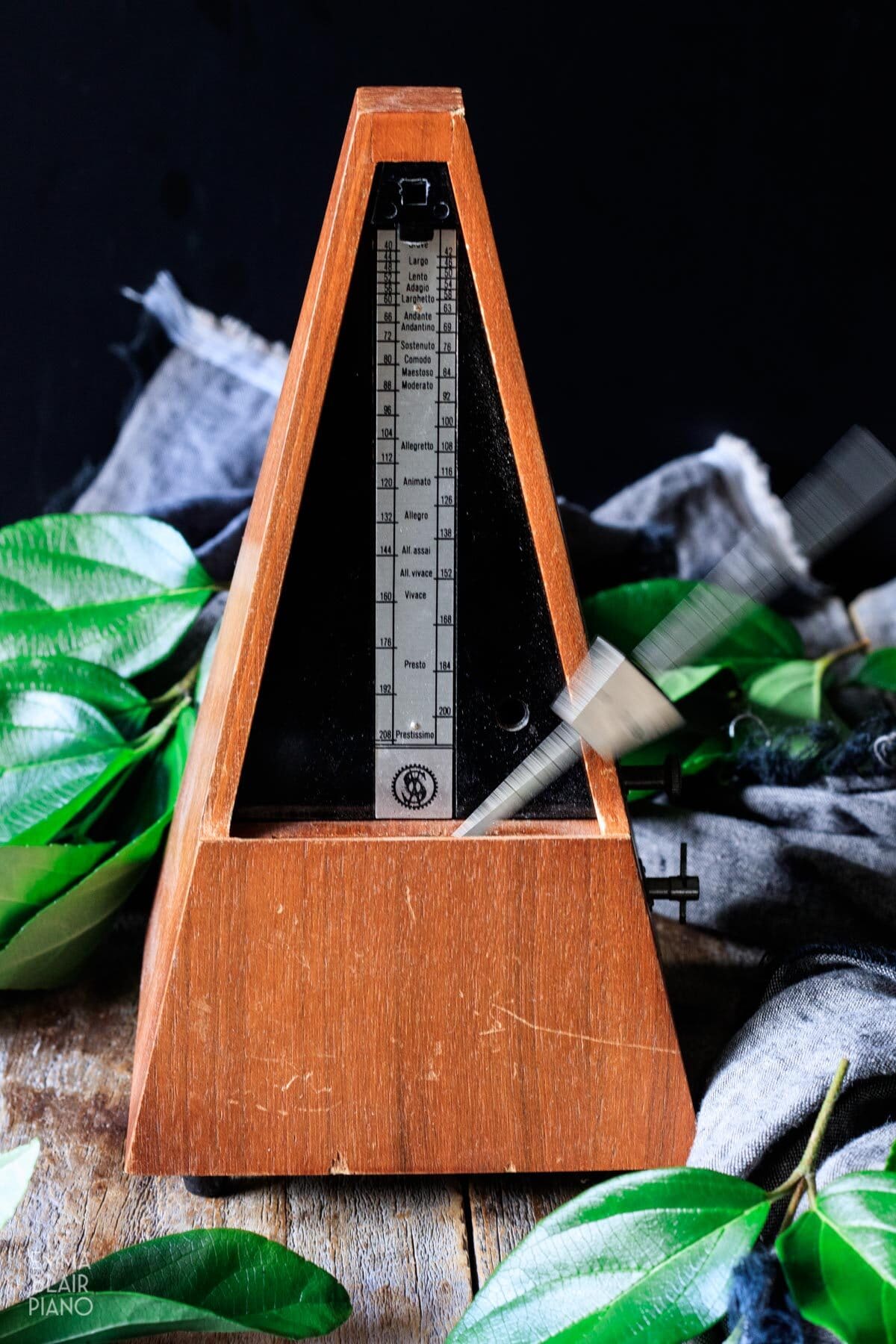
Jump to:
Tips & Tricks
Practice, precision, and patience.
No one wants to hear this, but piano is like many other skills: it takes dedicated, precise practice over many years to truly be able to play accurately at a fast speed. Don't be discouraged, however; if you consistently work on strengthening and limbering up your fingers, you will see results in weeks or months, rather than years. However, gaining virtuoso-level speeds will not be instantly attainable.
Practice very slowly, then gradually build up the tempo.
The key to learning to play quickly is practicing slowly. There's no way that you can successfully play a piece at a fast tempo if you can't play it correctly at a slow speed. It's vital that you start practicing a song slow enough for you to play it perfectly before you start increasing the speed.
The best way to ensure that you're practicing the song at a slow, consistent tempo is to use a metronome. Start practicing the song at quarter or half speed, then gradually increase the tempo by about 2-4 beats per minute until you can play at the goal speed. Be sure not to practice the piece faster than you can play it well.
Warm up.
If your fingers, wrists, and forearms are stiff and cold from not playing, you'll need to gently warm up and stretch them before jumping into a fast piece. Skipping a warmup can also set you up for an injury. You can either do a special piano warmup or simply play 10 minutes of scales and a few Hanon exercises.
Another thing: playing in a cold room will stiffen your muscles. If you have to play in a cold place, warm up your hands and forearms under hot water before warming up. This is especially helpful during the winter or when you're in an air-conditioned room in the summer.
Improve your technique.
If you are struggling to play scales, chords, and arpeggios correctly, you will definitely struggle with playing your pieces correctly. Also, if you can't play your piece correctly, especially at a slow tempo, you won't be able to play it fast. Always focus on improving your piano technique so you can play the piano faster and more accurately.
Be sure to set aside at least 10 minutes per hour of practice for technique. This short amount of time on technique, if consistently implemented, will drastically improve your agility and finger strength. There are numerous benefits to playing scales, so don’t miss out on this opportunity to improve your knowledge of music.
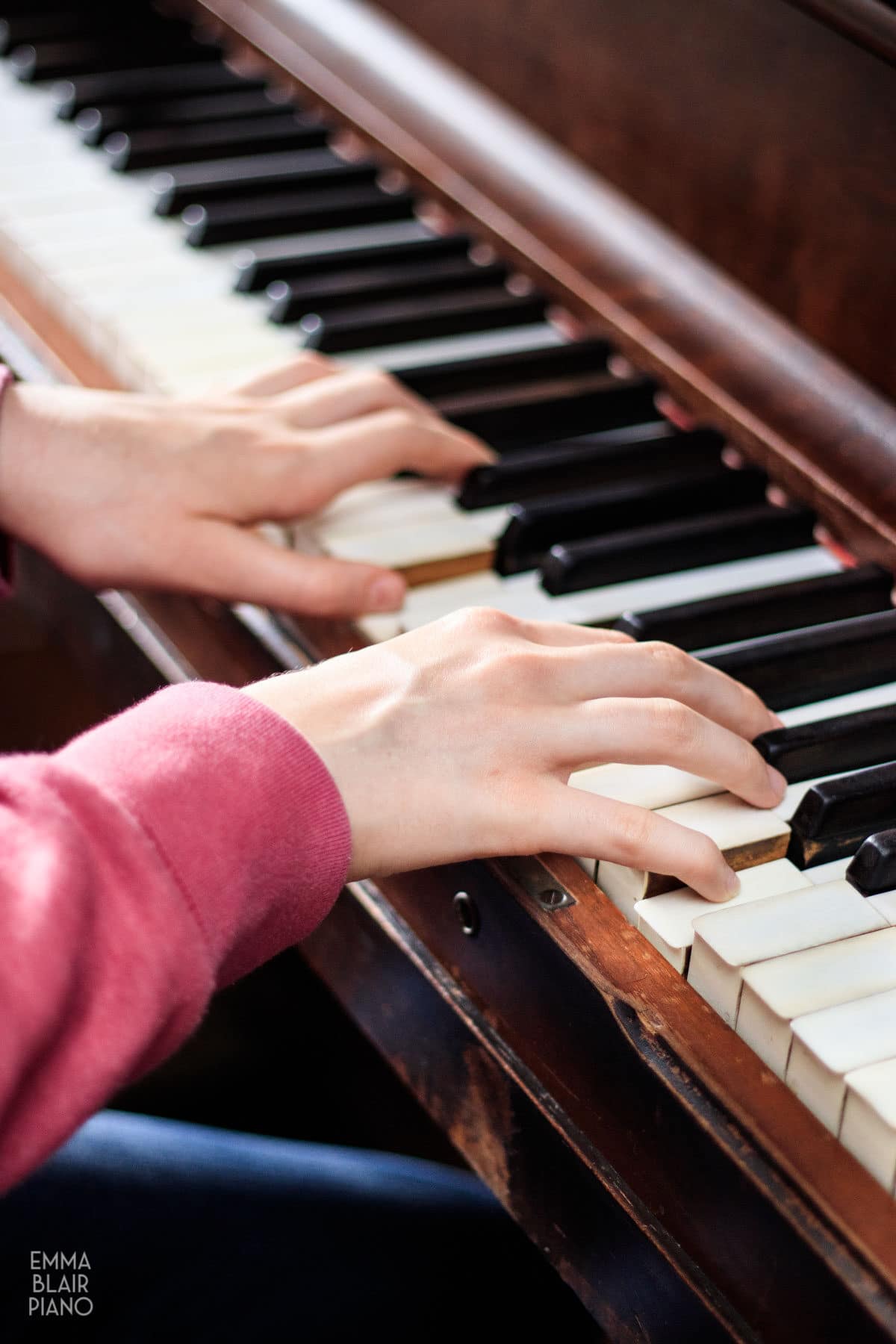
Memorize the notes and rhythms.
There's no way that you can accurately play a song at a fast tempo if you don't know the notes and rhythms well. Take the time to practice the piece at half speed or even slower until you can play the correct notes with the correct rhythms perfectly. In fact, speed is the last thing you should be working on when learning a new piece.
Memorize the correct fingering.
If you're always stopping to figure out the right fingering for a challenging passage, that hesitation is preventing you from playing that part smoothly and quickly. Pencil in the right fingering and practice it over and over until you've memorized it and can play it perfectly. Then, and only then, can you work on speeding it up.
Don't pause.
Unlike with dance steps, you can't make the intervals in your piece smaller to make them easier to play! What you can do is make sure that you're very comfortable with quickly transitioning from chord to chord. Don't pause between chord or key changes or when the fingering gets awkward, as this will throw off your rhythm.
Don't tense up when you're playing.
Stiffening your muscles while playing will cause you to carry tension in your shoulders, wrists, and forearms, making it difficult to play at a faster tempo. Remedy this issue by warming up properly with scales, chords, arpeggios, and finger exercises, practicing slowly, and sitting properly at the piano. Sitting properly will not only help you play faster and easier, but also will make your playing more comfortable and lessen the chance of injury.
Don't press the keys too hard.
When my tap teacher wanted our class to dance at a faster tempo, she told us that we needed to do two things: take smaller steps and make them a little bit quieter. This same strategy applies to piano. If all your time and energy is put into mashing down the keys, you won't have any left to put into speeding up the piece. If you want to speed up your playing, lighten your touch a little.

Keep your fingers close to the keys.
Another way you can "make the steps smaller" in piano is by keeping your fingers close to the keys. If you're picking up your hand a lot between chords, that takes up extra time and slows down your transitions. As soon as you play one chord or melody line, your hands should already be moving to the next position.
As you may have learned from sight reading, your mind should always be one step ahead of your fingers. This keeps you moving along instead of halting at difficult parts of the piece. Maintaining the flow of a song is crucial to playing it at a consistent and faster speed.
Use the weight of your forearms to play fast and loud.
If you're simply using finger strength to play loud and fast, you will quickly get tired. To see what I mean, let your arms hang limply at your sides to get a feel for the weight they have, then channel that weight into your playing. You’ll instantly notice a difference!
Practice etudes and drills.
Etudes (also called studies) are short classical pieces that focus on a particular aspect of technique, such as trills, arpeggios, or octaves. Choose etudes that are specifically written to improve speed. Another option is modern speed drills for piano.
Resources
Dr. Cory Hall of YouTube fame shared an excellent article packed with tips on making your playing fluid.
Czerny's books School of Velocity and Art of Finger Dexterity are great examples of etudes that specifically focus on speed.
Make your technique practice fun with these scale and arpeggio exercises from Pianote.
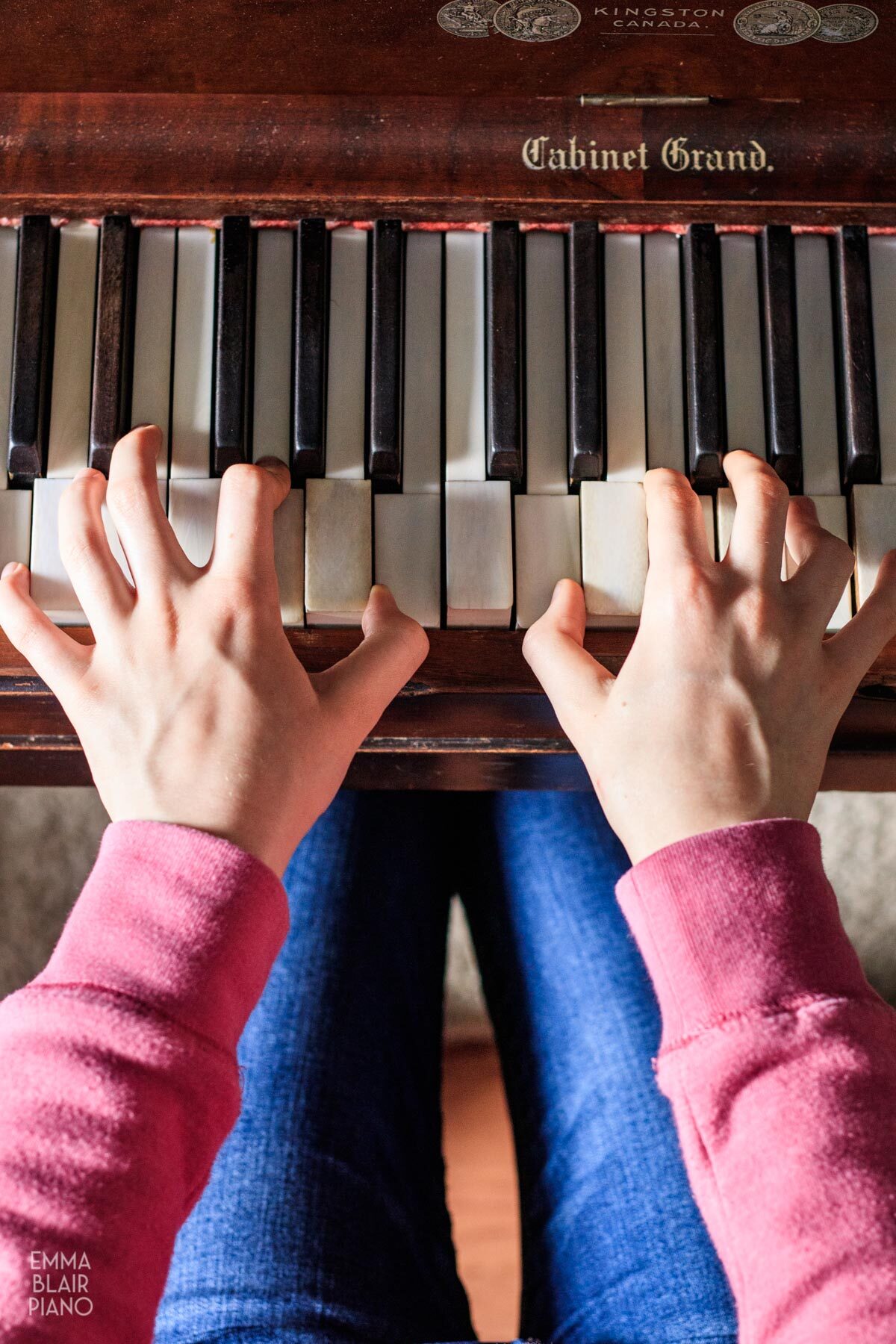
Conclusion
In my practice, I've definitely noticed significant improvements by implementing these tips. I hope that they will aid you in playing the piano faster and more accurately.
If you have any suggestions that you'd like to share about playing the piano faster, please let me know in the comments. I'd love to hear your thoughts!
Follow Emma on Pinterest, YouTube, Instagram, and Facebook for more tips on becoming an amazing pianist!
Improve your piano playing with these other great blog posts.
- How to Choose a Good Piano Teacher
- The Top 5 Beginner Piano Exercises
- 10 Tips for Correct Piano Posture
- Why Are Scales Important?
- How to Stay Motivated to Practice the Piano
- How to Choose the Right Piano Music
- How to Prepare for a Piano Recital
- How to Play Hanon Exercises
- How to Prepare for a Piano Recital
- 15 Ways to Motivate Teens to Practice the Piano



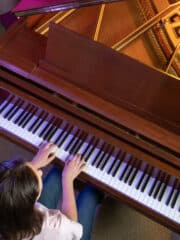

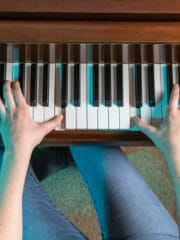
Brooke
If the definition of "playing a song faster" is the length of time it takes to perfect the piece for a performance, then another suggestion could be to limit the number of songs a piano student plays. For example, have the student play only two at a time instead of five or six. This way there is more time to perfect the song, if the student has a limit on their practice time. (I.e.one hour of practice time.). Great job on this post. Please keep them coming.😊
Emma
That's a good way to help students focus on working on their trouble spots, rather than glossing over them and trying to play the song at too fast a tempo. I'm glad you're enjoying the posts!
Beth
This post has some really great suggestions! Focusing on the parts you have trouble with instead of playing the easier parts is another way to learn a piece faster. 👍
Emma
I totally agree! It's definitely more comfortable to focus on the parts of a piece that are already perfected, but that doesn't push one to become more skilled. Smoothing out the mistakes not only improves one's speed, but also one's confidence and mastery of the piece. Thanks for commenting, Beth!